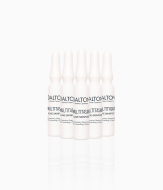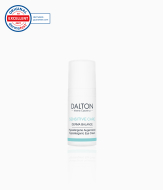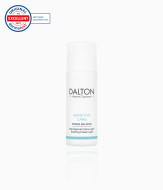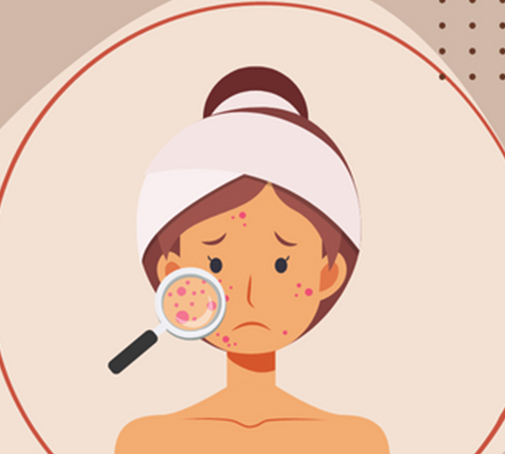
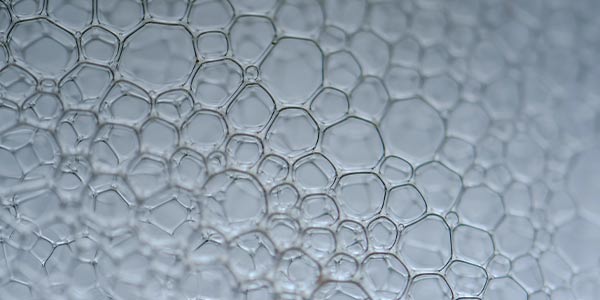
What Your Microbiome Has to Do with Healthy Skin
Bacteria, viruses, and fungi? Not exactly what we like to think about. But maybe we should! These tiny organisms play a huge role in keeping our skin and body healthy. To learn more, we sat down with our product developer, Eva, for an expert take on the topic.
Q&A
Let's Ask Our Expert


Eva, DALTON Product Developer (B.Sc. in Food Technology)
1. In simple terms, what is the microbiome? And what is skin flora?
Eva: The human microbiome is the collection of all microorganisms that naturally live in and on the human body. To put things in perspective, an adult human is home to about 100 trillion bacteria—making up roughly 1-3% of our body weight! These microorganisms are essential for our survival and can be found on our skin, in our gut (gut flora), throughout the digestive system, and on our mucous membranes. The microbes living on the skin’s surface are often called the "skin flora" or "skin microbiota". It is crucial to understand what the skin microbiome is, as it plays a significant role in maintaining skin health.
2. What is the composition of the microbiome?
Eva: The skin microbiome is a complex ecosystem that varies from person to person. It also depends on the specific area of the body—different types of bacteria, viruses, and fungi thrive on the face, under the arms, on the hands, in the gut, and in intimate areas. The composition, quality and diversity of these microorganisms are shaped by a combination of external (extrinsic) and internal (intrinsic) factors.
3. What role does the microbiome play in skin and overall health??
Eva: A healthy, well-balanced microbiome is integral to our skin’s natural defense mechanisms. It helps regulate pH levels, which plays a crucial role in supporting the acid mantle and maintaining a protective barrier. The beneficial bacteria in our skin's microbiome produce molecules that fortify the skin and act as a shield against harmful environmental factors and pathogens. A healthy microbiome also plays a crucial role in our immune system, as it helps to suppress the proliferation of harmful (pathogenic) bacteria and other undesirable microorganisms.
4. What affects the balance of our microbiome?
Eva: There are two types of factors that influence the microbiome: intrinsic (internal) and extrinsic (external). Intrinsic factors include genetics, natural aging, and hormonal influences—things we can’t really control. Extrinsic factors, on the other hand, include diet (which affects gut flora), medications (especially antibiotics), lifestyle choices (like smoking and exercise), stress, and personal hygiene. These are things we can control, meaning we have the power to support a healthy microbiome—or throw it off balance.


5. How can I tell if my skin’s microbiome is out of balance?
Eva: The skin usually reacts pretty quickly with temporary changes. If it suddenly feels unusually dry or, on the other end of the spectrum, extra oily, it could be a sign of imbalance. If this change doesn’t correct itself over time, it may indicate a long-term disruption of the skin’s microbiome. This can make the skin more sensitive and prone to irritation, redness, and inflammation. In some cases, it can even contribute to skin conditions like acne, psoriasis, or eczema. Changes in body odor and accelerated skin aging can also be signs of a disrupted microbiome. But it’s not just about the skin—when the gut microbiome is out of balance, it can lead to digestive issues, metabolic disruptions, or even inflammatory bowel diseases in more serious cases.
5. How can I tell if my skin’s microbiome is out of balance?
Eva: The skin usually reacts pretty quickly with temporary changes. If it suddenly feels unusually dry or, on the other end of the spectrum, extra oily, it could be a sign of imbalance. If this change doesn’t correct itself over time, it may indicate a long-term disruption of the skin’s microbiome. This can make the skin more sensitive and prone to irritation, redness, and inflammation. In some cases, it can even contribute to skin conditions like acne, psoriasis, or eczema. Changes in body odor and accelerated skin aging can also be signs of a disrupted microbiome. But it’s not just about the skin—when the gut microbiome is out of balance, it can lead to digestive issues, metabolic disruptions, or even inflammatory bowel diseases in more serious cases.
6. How can I take care of my skin using microbiome-friendly skincare?
Eva: The key to improving the skin microbiome is to use skincare products that do not disrupt the skin’s natural protective acid mantle. Ideally, they should have a pH level of 5.5 (which is skin-neutral). Harsh surfactants and strong fragrances such as essential oils can throw the skin’s microbiome off balance, so it’s best to avoid them. You may have heard of prebiotic ingredients in skincare. These are known for supporting the skin’s microbiome by nourishing beneficial bacteria on the skin, helping them grow and thrive. One example is phytosterols, which are derived from rapeseed and help nourish the good bacteria on your skin while keeping harmful microorganisms in check. This type of technology helps prevent premature aging and is often found in anti-aging products.
6. How can I take care of my skin using microbiome-friendly skincare?
Eva: The key to improving the skin microbiome is to use skincare products that do not disrupt the skin’s natural protective acid mantle. Ideally, they should have a pH level of 5.5 (which is skin-neutral). Harsh surfactants and strong fragrances such as essential oils can throw the skin’s microbiome off balance, so it’s best to avoid them. You may have heard of prebiotic ingredients in skincare. These are known for supporting the skin’s microbiome by nourishing beneficial bacteria on the skin, helping them grow and thrive. One example is phytosterols, which are derived from rapeseed and help nourish the good bacteria on your skin while keeping harmful microorganisms in check. This type of technology helps prevent premature aging and is often found in anti-aging products.
7. What foods are good for the microbiome?
Eva: The food we eat directly affects which bacteria thrive in our bodies. A balanced diet promotes a diverse microbiome and supports a healthy gut flora, which in turn supports digestion, metabolic functions such as vitamin synthesis, and the immune system. And as we all know—when our immune system is struggling, it often shows in our skin. An apple a day keeps the doctor away! Your gut bacteria love fiber and plant-based compounds found in fruits, vegetables, nuts, legumes, and whole grains. When gut bacteria break down fiber, they produce short-chain fatty acids, which nourish the gut lining, support immune function, and help prevent inflammation. A poor diet, on the other hand, can negatively impact both gut health and skin health.
We’ve all heard about probiotics from yogurt commercials. These beneficial bacteria—like Lactobacillus and Bifidobacteria—are mainly found in fermented foods like kimchi or sauerkraut and have a positive impact on gut health. The takeaway? A varied, nutrient-rich diet is one of the best ways to support your microbiome.


